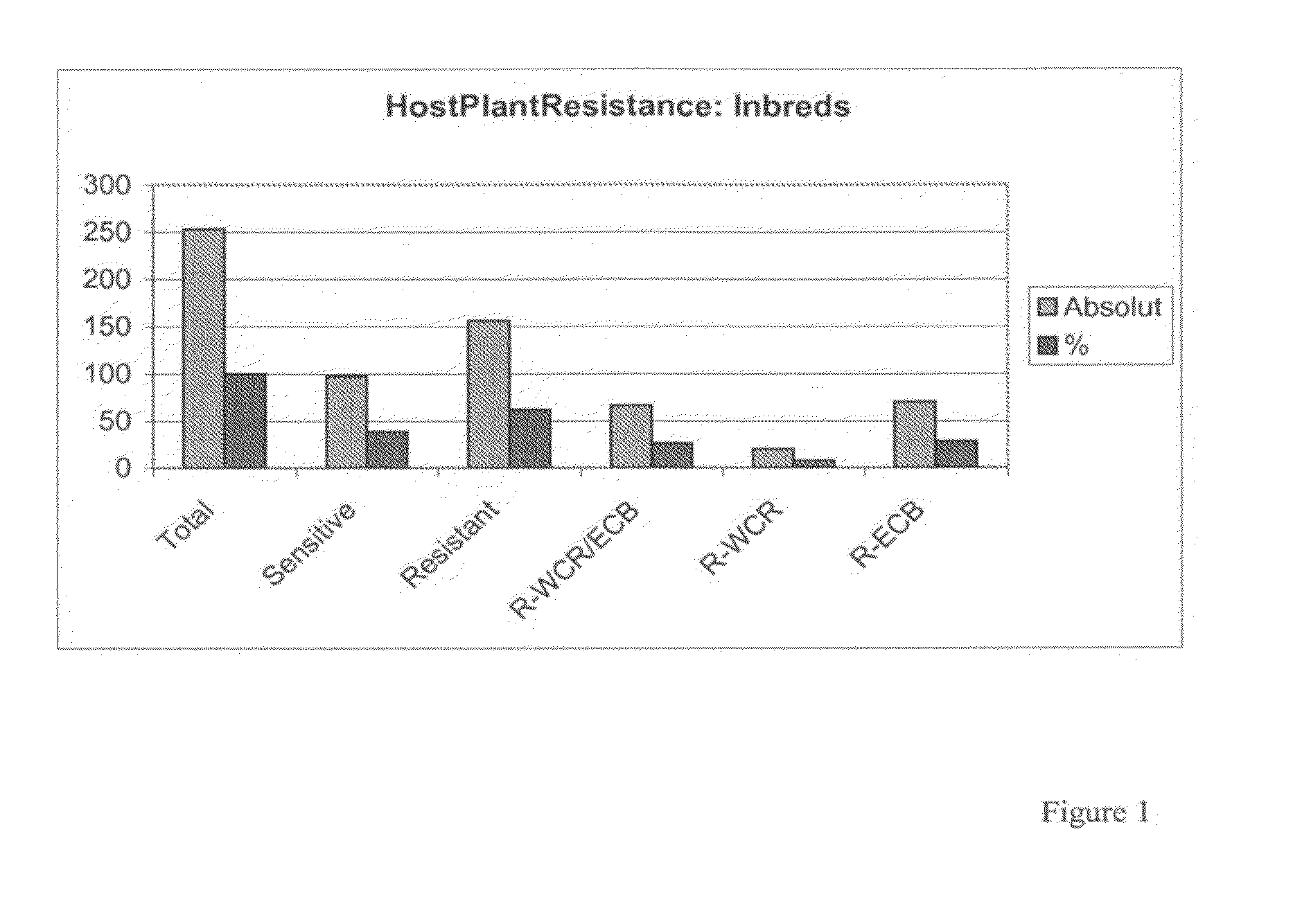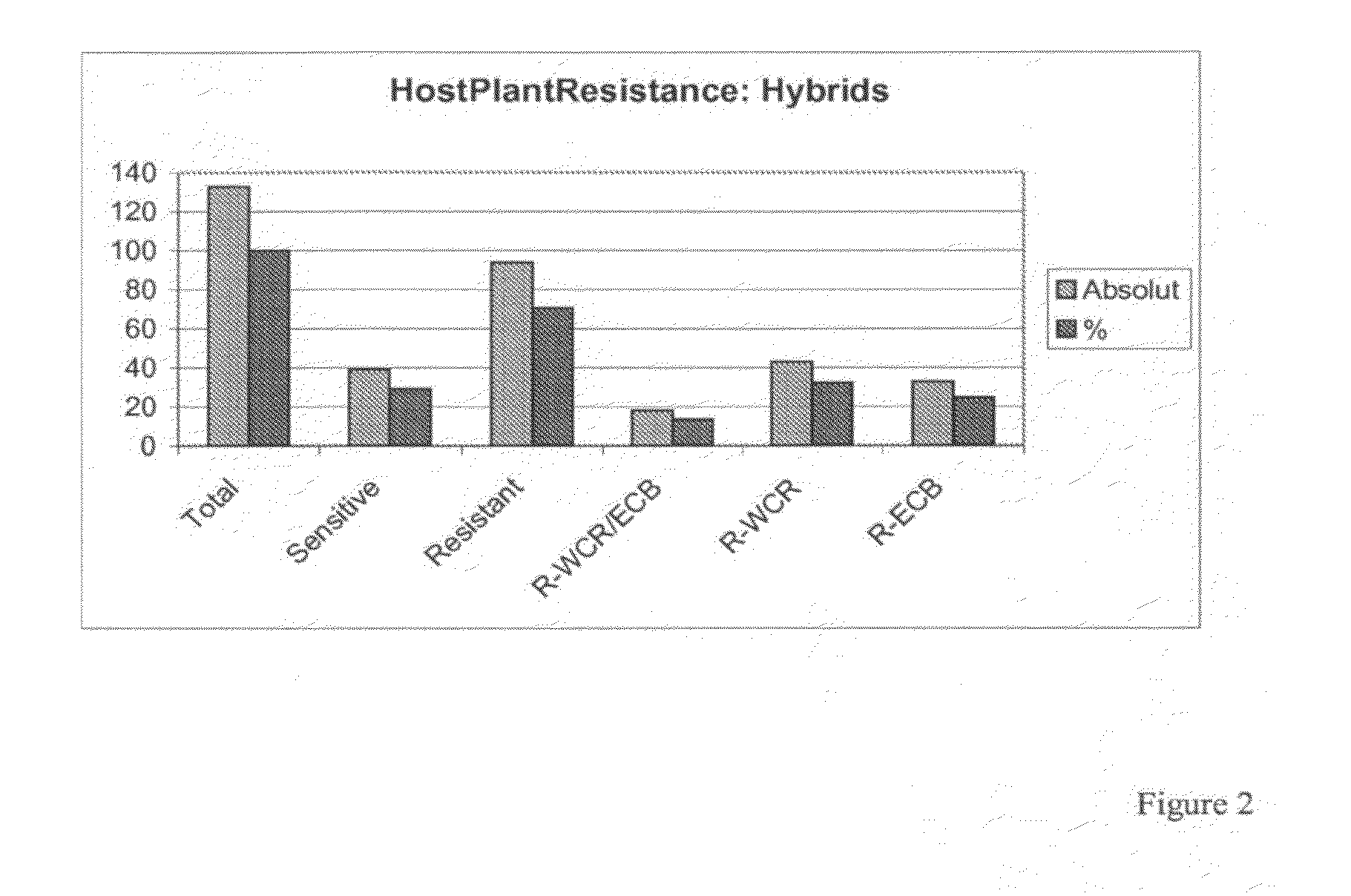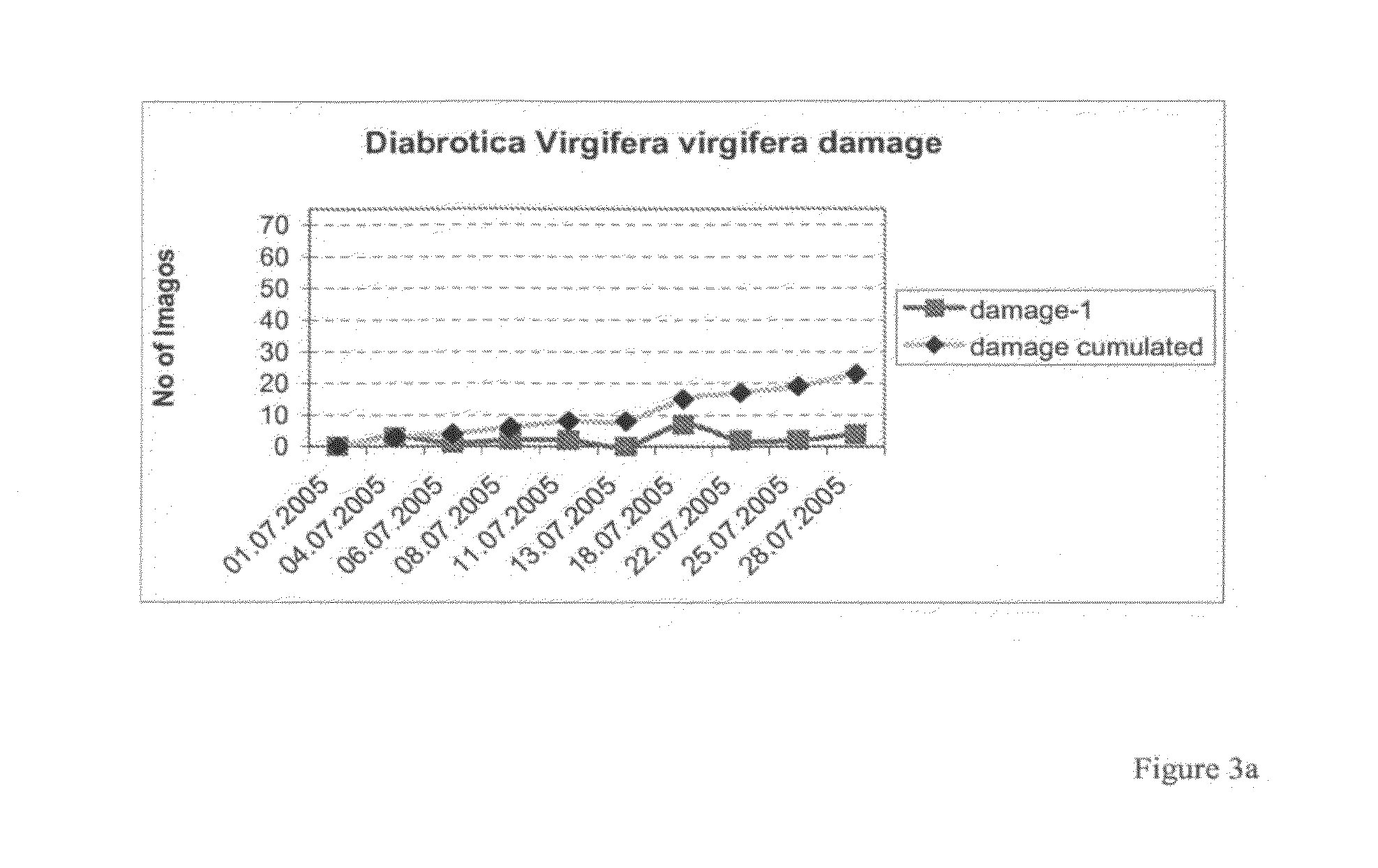Plants with increased resistance to diabrotica virgifera and ostrinia nubilalis
a technology of which is applied in the field of plants with increased resistance to diabrotica virgifera and ostrinia nubilalis, can solve the problems of threatening the high yielding performance of maize, the disappearance of hundreds of landraces, and the threat to the diversity of plant li
- Summary
- Abstract
- Description
- Claims
- Application Information
AI Technical Summary
Problems solved by technology
Method used
Image
Examples
Embodiment Construction
1. Generation of WCR / ECB Resistant Maize Lines
[0127]The breeding method for the resistant lines was the following: The parent material was recombined with the subsequent selfed generations at simultaneous artificial infestation with the larvae of WCR and ECB according to the bazooka technique described in the literature. The parent material of the lines AT0039, R4535, and R7222 (see table below) are genetically broad, but heterotically clearly defined synthetics with a portion of 25% of HPR exotics.
[0128]HPR exotics derive from tropical / subtropical genetic material. A HPR donor is a “(natural) host plant resistance” donor which has been bred along with artificial infestation to exhibit stable resistance against a high number of maize pests.
[0129]The bazooka technique is a method for the targeted application of a certain amount of larvae on the maize plant. It was developed by Dr. J. A. Mihm in 1979. See also Wiseman, B. R; Widstrom, N. W. Comparison of methods of infesting whorl-sta...
PUM
| Property | Measurement | Unit |
|---|---|---|
| Electrical resistance | aaaaa | aaaaa |
Abstract
Description
Claims
Application Information
 Login to View More
Login to View More - R&D
- Intellectual Property
- Life Sciences
- Materials
- Tech Scout
- Unparalleled Data Quality
- Higher Quality Content
- 60% Fewer Hallucinations
Browse by: Latest US Patents, China's latest patents, Technical Efficacy Thesaurus, Application Domain, Technology Topic, Popular Technical Reports.
© 2025 PatSnap. All rights reserved.Legal|Privacy policy|Modern Slavery Act Transparency Statement|Sitemap|About US| Contact US: help@patsnap.com



